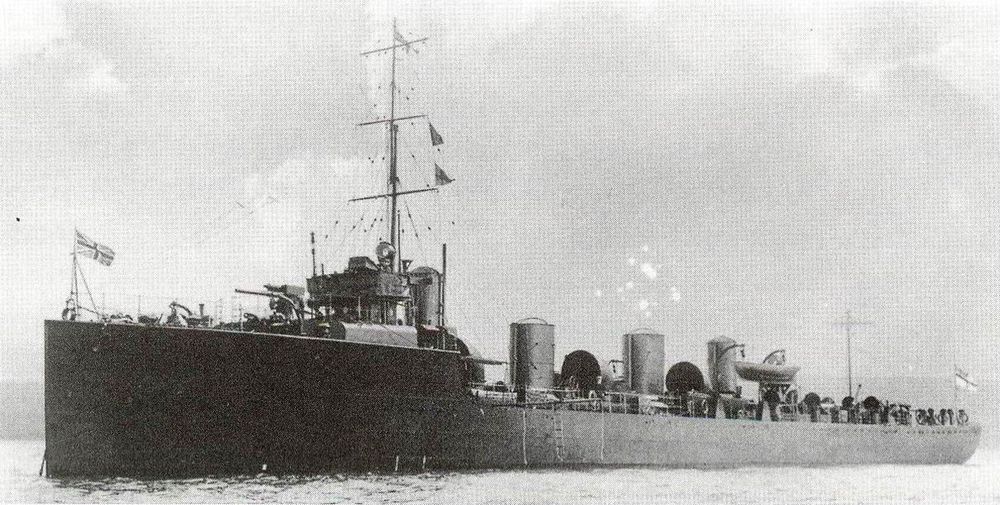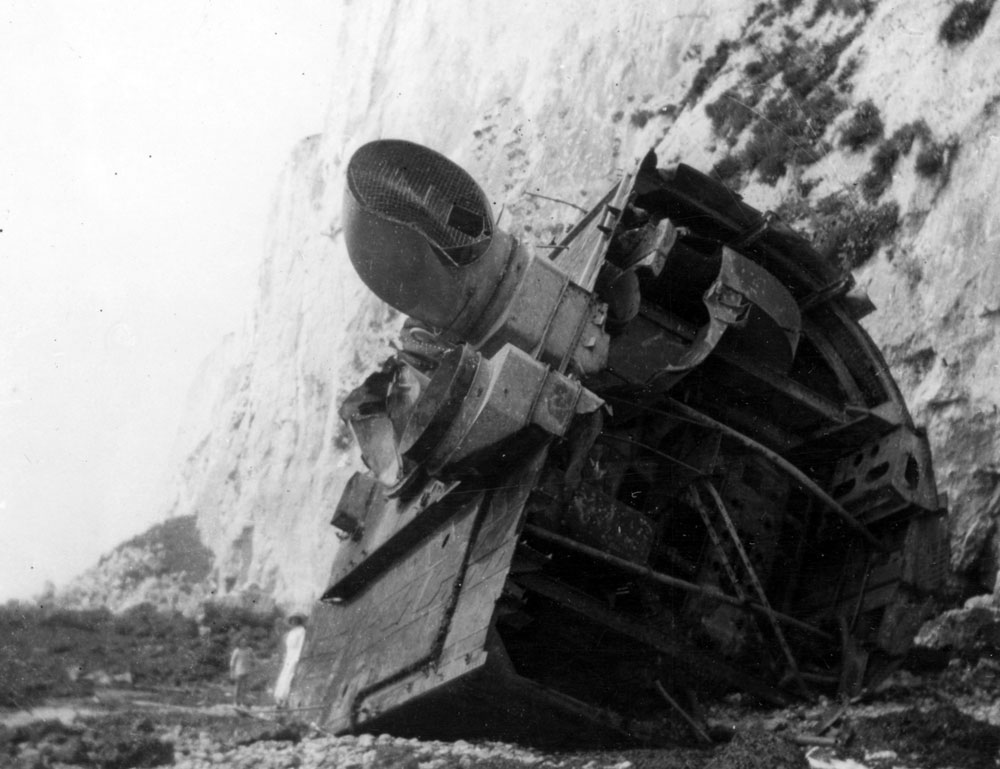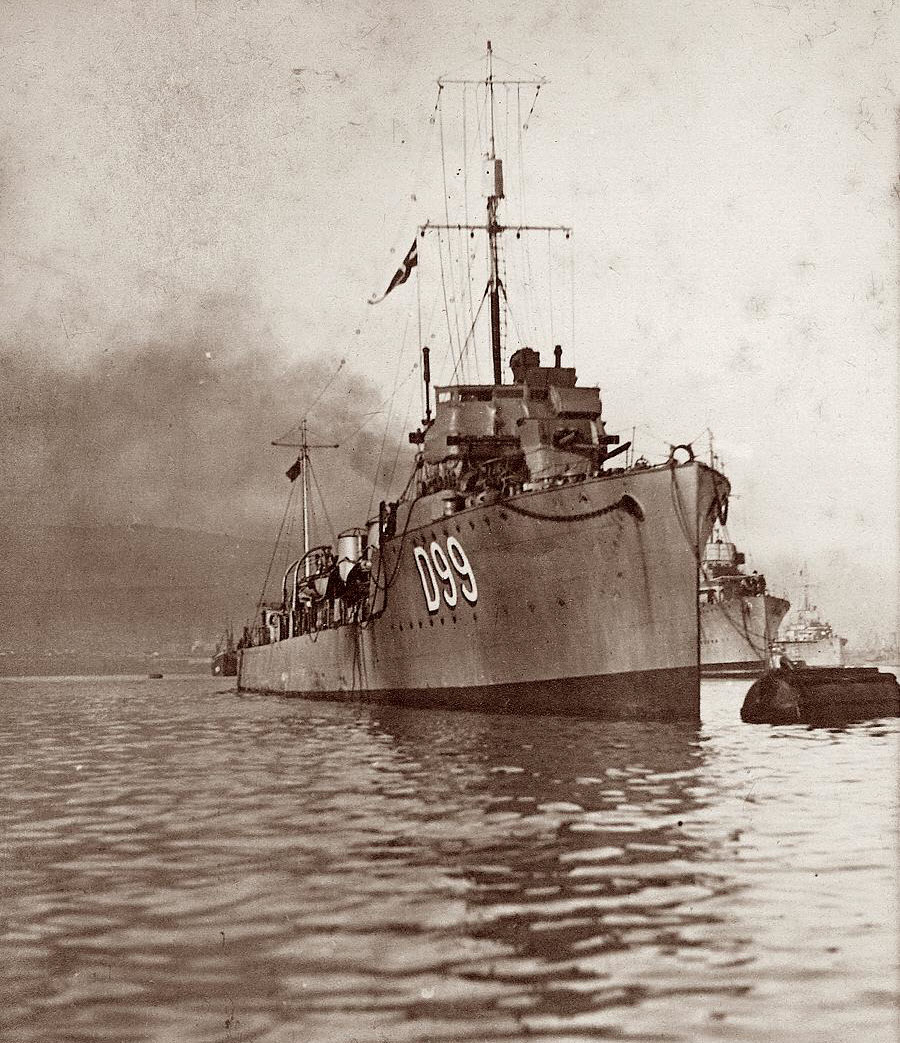It is not unusual for navies to cannibalize ships decommissioned or rendered unserviceable by accidents for parts, but rarely an entire new ship was created by welding together the ends of two ships.
In 1909, the Royal Navy launched two Tribal-class destroyers named HMS Zulu and HMS Nubian. The Tribal-class destroyers were powered by steam turbines and used oil-fuel rather than coal in their boilers. These ships had high fuel consumption, which shortened their ranges severely limiting their radius of action. Because they could not go out into the open ocean, Tribal-class destroyers were used primarily for home defense, hunting submarines, and protecting England from any seaborne threats.

HMS Zulu + HMS Nubian = HMS Zubian.
Both HMS Zulu and HMS Nubian saw action during the First World War. Zulu successfully carried out patrol duties near the straits of Dover, capturing the German sailing ship Perhns on August 1914. She then took part in a large scale operation off the Belgian coast to lay mines and nets. She was joined by Nubian, and together they laid lines of dan-buoys to mark the positions for the minefields and nets to be laid.
Nubian spent most of her first few years engaging in Naval exercises. In 1912, she went to Manchester to take part in a Whitsuntide display at the city. Moored at Trafford Wharf, she was visited by hundreds of thousand of people who were allowed to board the ships. Many more had to turned away because of overcrowding.
During the Battle of Dover Strait, in October 1916, Nubian's bow was severed by a German torpedo that exploded almost under her bridge. The disabled Nubian was attached to a line to be towed back to Dover, but bad weather caused her to break away and she ran aground on the South Foreland, near Dover, killing 15 of her crew and totally damaging her bow.

HMS Zulu
A month later, Zulu was sailing from Dover to Dunkirk when she struck a mine, that exploded under the ship's engine-room. Three men were killed, and the ship's stern broke off and sunk. Zulu was towed to safety by French destroyer that was nearby.
With two Tribal-class destroyers disabled within a month of each other, the Royal Navy began one of the most remarkable salvaging operations in history. The remains of both ships were taken to Chatham Dockyard in Kent, where a group of skilled engineers severed off the damaged parts and surgically joined together the two functioning but opposite ends from both ships. Thus, HMS Zubian was born. The name is a portmanteau of the names of the original ships.
The hybrid ship went back to action on the Dover Straits, patrolling the waters for German U-boats and participating in escort missions for convoys and raiding parties on the Belgian ports. After the war, the worn-out ship was sold and broken up for scrap.

The severed stern of HMS Zulu.

Nubian lying on its side after the storm.

HMS Zubian



An interesting feat of engineering considering Zulu was 6 inches wider than Nubian!
ReplyDelete